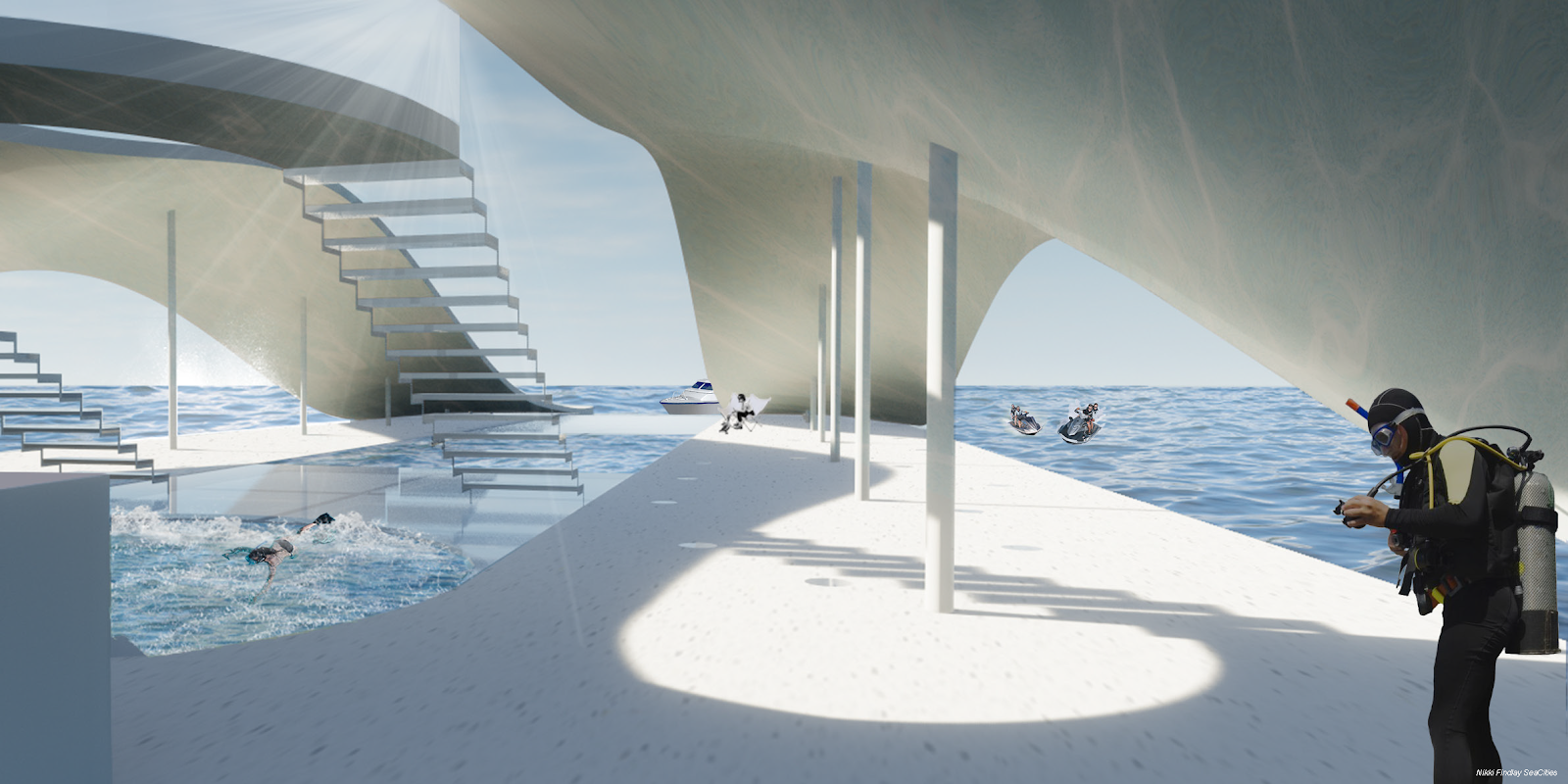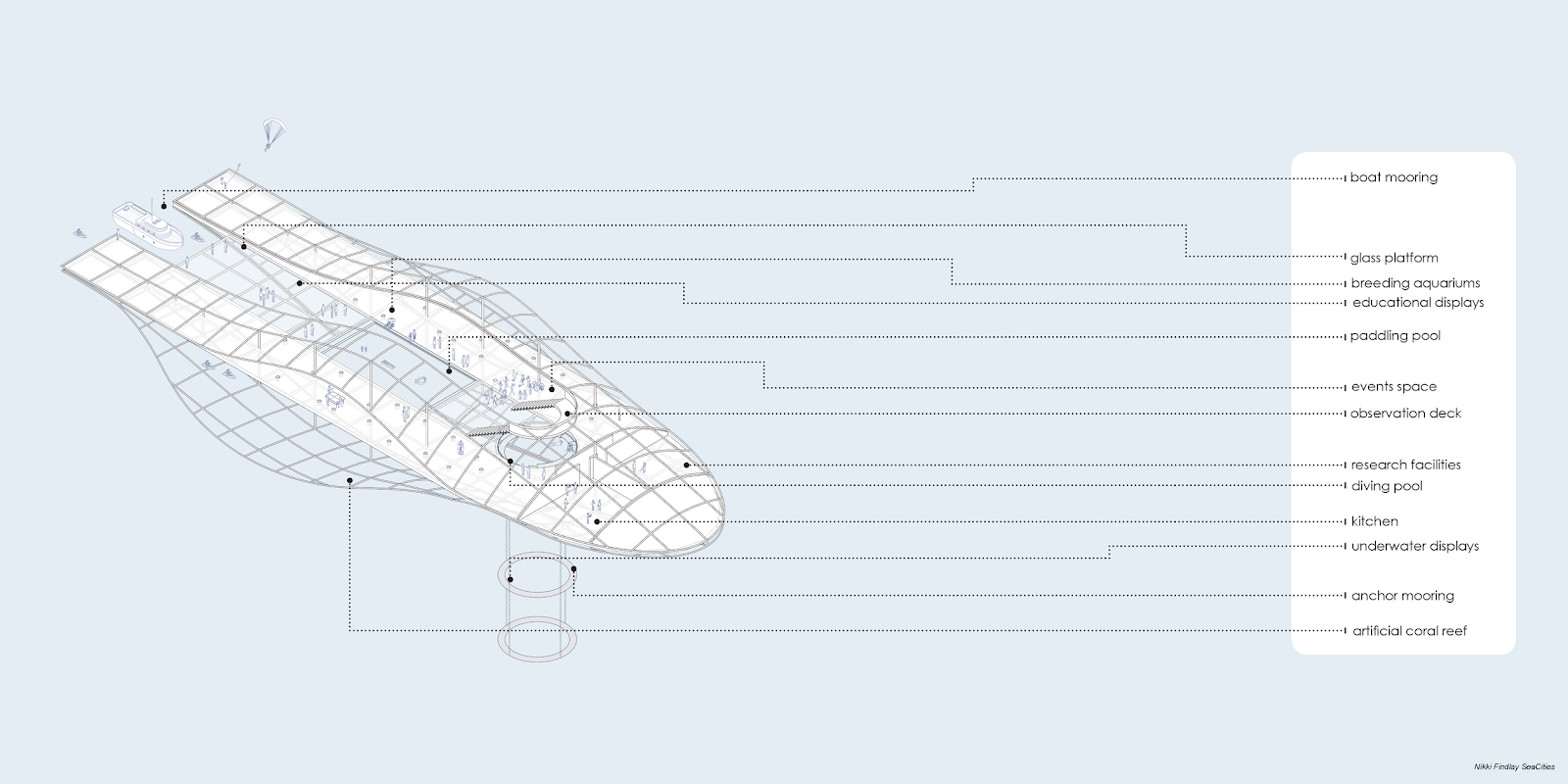Going Above and Below
When considering a design in the floating architecture space we have the enviable position of working from a place of possibility. Not limited by terra firma, structures can go up, down and then out in a way that is not possible in traditional construction.
A design that illustrates this paradigm so well was unveiled recently at a symposium titled “Urban Tactics for Flooding: From Risks to Opportunities” presented by Griffiths University’s Cities Research Institute.
Sea Manta, described by the GriffithNews as a “proposed 60m long recreational and ecological structure” is an ingenious design.

An aquarium, swimming pool and bar are all above the water line while an artificial reef and dive structure are found below. An innovative answer to an ecologically beneficial floating tourist destination, this structure beautifully aligns with the twin goals of enjoying nature and leaving it unharmed. What is truly remarkable is that the Sea Manta’s design goes one step further: the 3D printed ceramic artificial reef offers a system whereby coral and fish can flourish.

The designers of Sea Manta are Griffith’s professor Joerg Baumeister and research assistant Nikki Findlay from the school of Architecture and Design and the Cities Research Institute. “An award-winning architect and urban designer,” Professor Baumeister is also the founder of a research group within the Institute called SeaCities which was founded in 2019, but officially launched at the opening of the symposium. The group’s mission is “to create innovative design solutions for future water-adapted architecture and cities.”
We here at Immerst applaud the efforts of Baumeister, Findlay and the team at Griffiths and SeaCities. Sea Manta is the kind of ambitious design that speaks to the structural and environmental possibilities of the nascent field of aquatecture.
Look Out Below